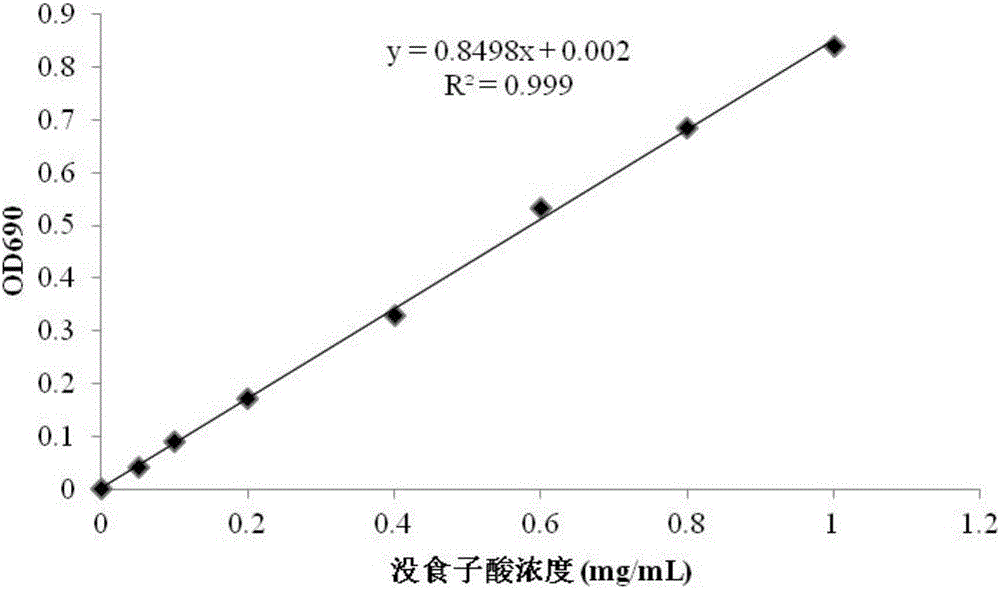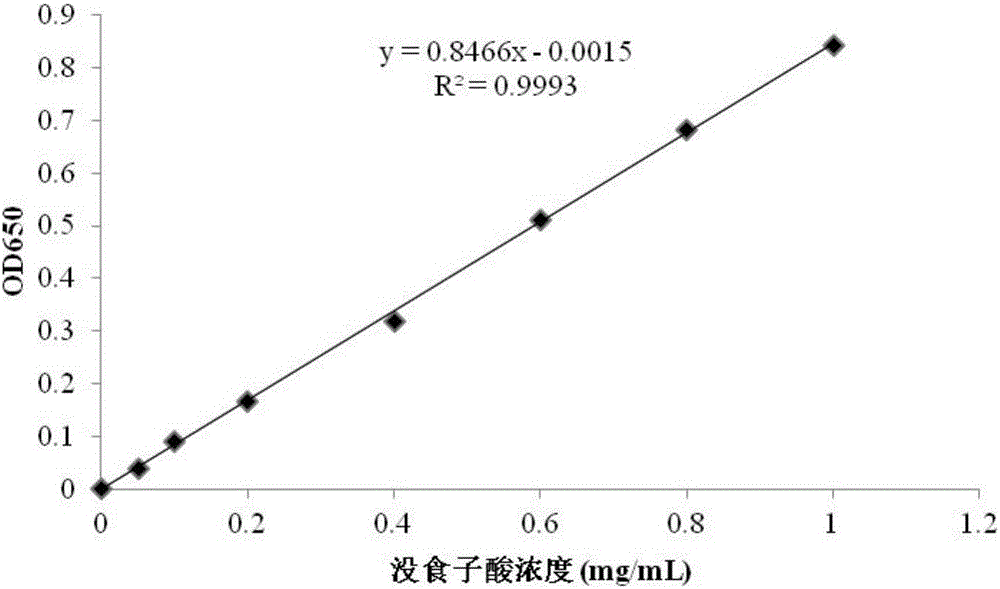Measuring method of total polyphenol content in litter
A determination method and litter technology are applied in the field of determination of polyphenol content, which can solve the problems of unsuitable quantitative analysis, high cost, complicated pretreatment steps, etc., and achieve the effects of saving experimental cost, less destructiveness, and shortening measurement time.
- Summary
- Abstract
- Description
- Claims
- Application Information
AI Technical Summary
Problems solved by technology
Method used
Image
Examples
Embodiment 1
[0022] A method for determining the content of total polyphenols in litter, using ethanol solution for pretreatment, using Folin–Ciocalteu reagent to quantitatively oxidize the substance to be tested, and finally using a multifunctional microplate reader for quantitative analysis. Consists of the following steps:
[0023] (1) After the litter is removed from impurities, it is quickly dried and pulverized in an oven at 55°C, and passed through a 70-mesh sieve;
[0024] (2) Weigh 0.08g of the powder sieved in step (1), add 0.8mL of ethanol solution with a volume fraction of 70%, mix well, seal it and put it in a constant temperature oscillation box, shake it at 250rpm room temperature for 3 hours, and then mix Incubate in the dark for 16 hours;
[0025] (3) Place the cultured mixture in a high-speed centrifuge, centrifuge at 10,000 rpm for 15 minutes, transfer the supernatant to a new test tube, seal it at 4°C and store it away from light until use, and perform the operation of...
Embodiment 2
[0031] A method for determining the content of total polyphenols in litter, using ethanol solution for pretreatment, using Folin–Ciocalteu reagent to quantitatively oxidize the substance to be tested, and finally using a multifunctional microplate reader for quantitative analysis. Consists of the following steps:
[0032] (1) After the litter is removed from impurities, it is quickly dried and pulverized in an oven at 60°C, and passed through a 70-mesh sieve;
[0033] (2) Weigh 0.09g of the powder sieved in step (1), add 0.9mL of ethanol solution with a volume fraction of 80%, mix well, seal it and place it in a constant temperature oscillation box, shake it at 220rpm room temperature for 4 hours, and then mix Incubate in the dark for 14 hours;
[0034] (3) Place the cultured mixture in a high-speed centrifuge, centrifuge at 11,000 rpm for 16 minutes, transfer the supernatant to a new test tube, seal it at 4°C and store it in the dark for later use, and perform the step ( 4)...
Embodiment 3
[0040] A method for determining the content of total polyphenols in litter, using ethanol solution for pretreatment, using Folin–Ciocalteu reagent to quantitatively oxidize the substance to be tested, and finally using a multifunctional microplate reader for quantitative analysis. Consists of the following steps:
[0041] (1) After the litter is removed from impurities, it is quickly dried and pulverized in an oven at 65°C, and passed through an 80-mesh sieve;
[0042] (2) Weigh 0.1 g of the powder sieved in step (1), add 1 mL of ethanol solution with a volume fraction of 95%, mix well, seal it and place it in a constant temperature shaking box, and shake it at 300 rpm for 3.5 hours at room temperature, then the mixture is kept away from the Light culture for 12h;
[0043] (3) Place the cultured mixture in a high-speed centrifuge, centrifuge at 12,000 rpm for 12 minutes, transfer the supernatant to a new test tube, seal it at 4°C and store it in the dark for later use, and pe...
PUM
| Property | Measurement | Unit |
|---|---|---|
| concentration | aaaaa | aaaaa |
Abstract
Description
Claims
Application Information
 Login to View More
Login to View More - R&D Engineer
- R&D Manager
- IP Professional
- Industry Leading Data Capabilities
- Powerful AI technology
- Patent DNA Extraction
Browse by: Latest US Patents, China's latest patents, Technical Efficacy Thesaurus, Application Domain, Technology Topic, Popular Technical Reports.
© 2024 PatSnap. All rights reserved.Legal|Privacy policy|Modern Slavery Act Transparency Statement|Sitemap|About US| Contact US: help@patsnap.com










